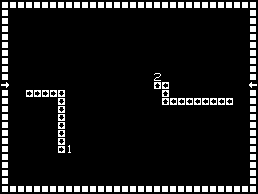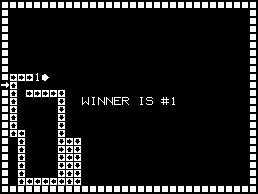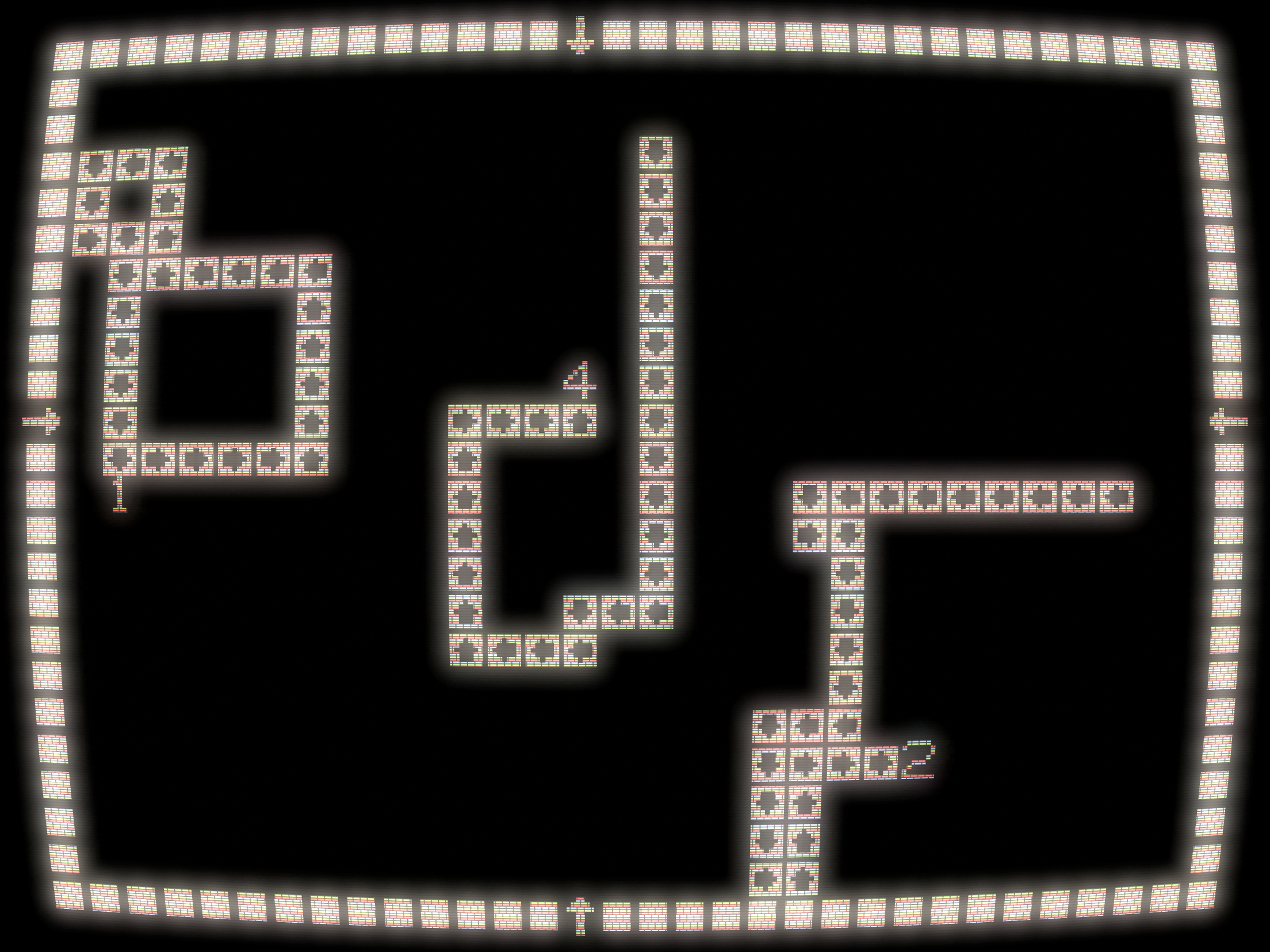 The Game: Up to four players control markers that leave a solid “wall” in their wake. The object of the game is to trap the other players by building a wall around them that they can’t avoid crashing into – or forcing them to crash into their own walls. Run into a wall, either your own or someone else’s, ends your turn and erases your trail from the screen (potentially eliminating an obstacle for the remaining players). The player still standing at the end of the round wins. (Ramtek, 1976)
The Game: Up to four players control markers that leave a solid “wall” in their wake. The object of the game is to trap the other players by building a wall around them that they can’t avoid crashing into – or forcing them to crash into their own walls. Run into a wall, either your own or someone else’s, ends your turn and erases your trail from the screen (potentially eliminating an obstacle for the remaining players). The player still standing at the end of the round wins. (Ramtek, 1976)
Memories: If you’re a fan of the “Light Cycle” concept made popular by Tron (both the movie and the game), this is where it all started, with an obscure game from a relatively obscure manufacturer. But that obscurity isn’t earned by a game that essentially launched and entire genre.
 Here at Phosphor Dot Fossils, we refer to that genre as “Claiming Territory”, and that basically means that the object of the game is to rope off, or “claim” portions of the screen so that an adversary, whether another player or the computer, can’t use it anymore. Barricade is the original “Claiming Territory” game. That it’s playable by up to four players (one quarter would start a two-player contest, while an additional quarter would enable a three or four player game) is just an impressive bonus. More well-known game companies would try to claim the idea as their own in the years ahead – witness Atari’s Dominos and Midway’s Checkmate – but the Light Cycle first revved up in Barricade.
Here at Phosphor Dot Fossils, we refer to that genre as “Claiming Territory”, and that basically means that the object of the game is to rope off, or “claim” portions of the screen so that an adversary, whether another player or the computer, can’t use it anymore. Barricade is the original “Claiming Territory” game. That it’s playable by up to four players (one quarter would start a two-player contest, while an additional quarter would enable a three or four player game) is just an impressive bonus. More well-known game companies would try to claim the idea as their own in the years ahead – witness Atari’s Dominos and Midway’s Checkmate – but the Light Cycle first revved up in Barricade.
Ramtek remains an obscurity in arcade circles; it was one of the many companies – referred to by Nolan Bushnell as “the jackals” – that had spent much of its early days cloning other games. By this  time, one of its own executives had already jumped ship and started his own company. The executive was one Pete Kaufman, and his new startup venture – which would also enter the coin-op video game business – was called Exidy.
time, one of its own executives had already jumped ship and started his own company. The executive was one Pete Kaufman, and his new startup venture – which would also enter the coin-op video game business – was called Exidy.

